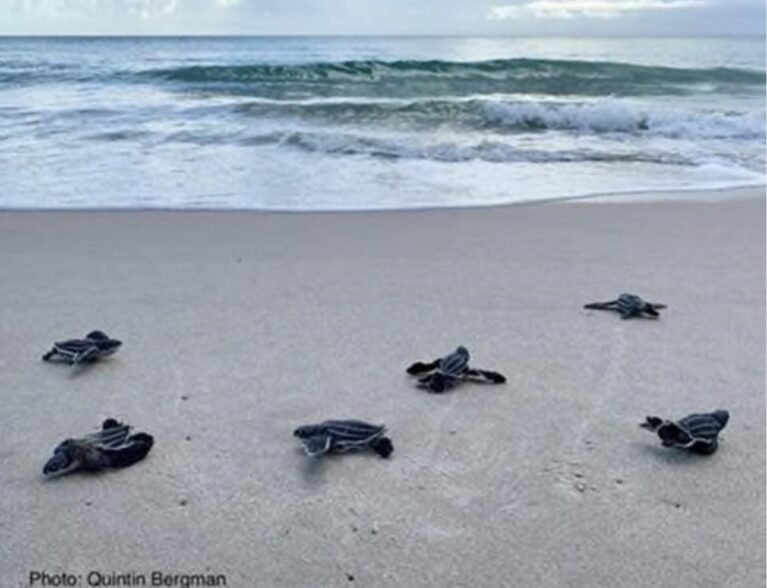
INDIAN RIVER COUNTY — Sea turtle nesting season was in full bloom this year, with more than 12,000 nests being recorded along the county’s 22-mile-long shoreline, officials said. The record number comes at the end of the Atlantic hurricane season, which saw 20 named storms for 2023.
Hurricane Idalia – which swirled on Aug. 30 near Keaton Beach, Florida – was the only hurricane to make landfall in the U.S. this year, according to the National Oceanic and Atmospheric Administration. The deadly storm, packing 130-mph maximum sustained wind speeds, hit northwestern Florida as a Category 3 hurricane, claiming up to 10 lives and causing 7-to-12 feet of storm surge, officials said.
So far, Indian River County has been spared from any powerful hurricanes making landfall this year. This means the sea turtle nests – burrowed within the sand along the county beaches – were not destroyed or blown away.
Marine turtle permit holders conduct daily surveys on the nests, while the Florida Fish and Wildlife Conservation Commission compiles the data into state totals, county totals and nesting density by beaches, according to officials. Authorities counted a total of 12,771 sea turtle nests this year for Indian River County, surpassing the previous number of 9,242 nests in 2022.
Sea turtle nesting season runs from March 1 through October 31. There are three species of sea turtles – leatherbacks, loggerheads and greens – that nest along Indian River County beaches.
“Each individual turtle is capable of laying up to six nests during one season and each nest containing 80-to-120 eggs,” county officials said.
Leatherbacks, the largest species, produced 27 nests this year in the county. The most common species – the loggerheads – made 8,639 nests, officials said.
The greens, known for eating sea grass, dug 4,105 nests.
FWC officials and the U.S. Fish & Wildlife Service consider each species as endangered, authorities said. County officials said the populations became imperiled because of unregulated fishing of sea turtles for their meat and shells, along with beachside developments that destroy much of their nesting habitat.
Sea turtles are protected by state and federal laws. Anyone who intentionally destroys a sea turtle nest or its eggs will face a third-degree felony charge, Vero Beach police officials previously said.
“Activities and behaviors of wildlife can be difficult to predict, hence why there are extensive monitoring efforts around the state. Sea turtles are unique species to protect when compared to other species that are afforded protection,” county officials said. “These marine reptiles leave feeding grounds to migrate thousands of miles through international waters to lay eggs on the same sandy beaches they hatched from. It can take one individual turtle between 20-to-30 years before it’s big enough to lay eggs.”
More information on the Sea Turtle Conservation Program can be found here.






